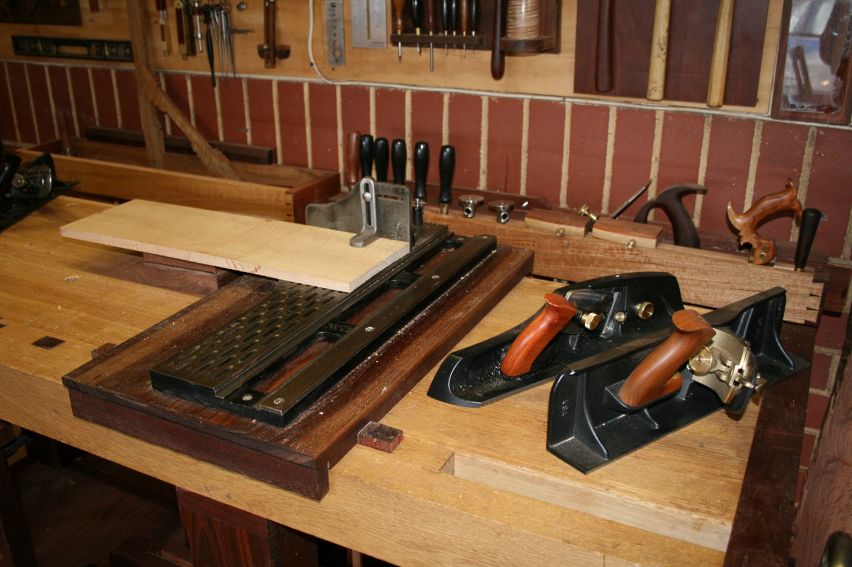By the way, re: the question earlier about using a punch. I did use a punch this time on the ends of the pins and tails, but then after using it for the long spans of pins and tails, went back to using a hammer for those. For the length of the tail against the socket, if those are cut relatively accurately, they'll close just with flat face strikes from the hammer. If there are gaps, then punch use might be necessary.
There are two steps to follow that:
1) start removing the material from the pins and tails (I will be doing that this weekend before fitting the infills, and then doing the final work on the plane)
2) if you see gaps developing, use the ball side of a relatively large hammer (so as not to have deep marks - bigger hammer, bigger radius, shallower marks) and tap any appearing voids shut. Not too deeply, though - the depth of the tapping needs to be removed to have a strike-free surface - it should be part of the draw filing and lapping process, and not create a bunch of extra work. Forcing yourself to remove too much metal is a good way to also find more voids appearing at other pins and tails. They usually just look like pinhole size and are easy to close.
Final surface finishing of a plane (draw filing and then sanding) will make the pins and tails disappear if they are void free.
Not too deeply, though - the depth of the tapping needs to be removed to have a strike-free surface.
https://postimg.org/image/dw0yq0h2r/
both planes in this picture are dovetailed, but no evidence exists to be seen on either one. The infills are also tight and gap free on the overstuffing (except for a bit of damage on the spiers). That's no great accomplishment on my plane - it's new. But for the condition of the old spiers to be so good is really a testament to the materials and workmanship. It (the spiers) is a dandy to use, too. I don't generally like coffin smoothers, but an infill coffin smoother is a completely different animal.

































